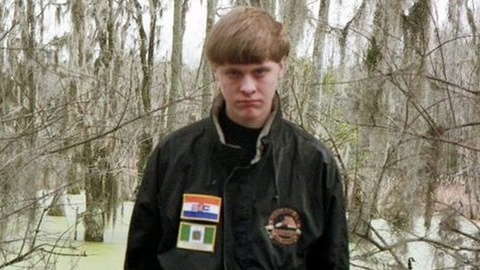The Anti-Defamation League added two new items to its hate symbol database.
The organization added the bowl-shaped haircut and OK hand symbol to a growing list of symbols white supremacists use to propagate their views, Mediate reported.
The hand symbol started out as a 4chan hoax, with trolls claiming racists used it to spell out “WP,” which stands for “white power.”
Just like how the swastika inherently wasn’t racist, when nazi started using it as a symbol it’s hard to go backwards. Clearly the OK sign hasn’t always been associated with WP, but WP people sure like using it now. pic.twitter.com/Ox2ZLlGfWF
— trumpforprison (@ThiccBeet) September 26, 2019
The ADL acknowledged its origins but argued white supremacists are using it in real life, citing Christchurch mass shooter Brenton Tarrant as an example.
“By 2019, the symbol was being used in some circles as a sincere expression of white supremacy,” the organization wrote. “Australian white supremacist Brenton Tarrant flashed the symbol during his March 2019 courtroom appearance soon after his arrest for allegedly murdering 50 people in mosques in Christchurch.”
The bowl-cut addition was inspired by the hairstyle Dylann Roof wore when he shot and killed nine Black churchgoers in 2017.
“Roof venerators often use Roof’s distinctive bowl-shaped haircut to refer to themselves and like-minded fans,” the statement read. “This includes using [the] word ‘bowl’ as part of a screen name such as ‘Bowltrash’ or ‘The Final Bowlution,’ or collectively referring to themselves using terms such as the ‘Bowl Gang’ or ‘Bowlwaffen Division.’”
This is Dylann Roof – the Charleston Church Massacre Terrorist. Look at the patch on his jacket. #ApartheidFlag
#notfakenews
pic.twitter.com/DBGfyLwN3W— Kim (@BirthdayBobotie) August 21, 2019
The ADL claims many young white supremacists view Roof as a “saint” and create memes depicting Roof as “a saintly figure with a halo around his head.”
“Even more common are memes featuring Roof’s haircut either by itself or digitally affixed to other people’s heads,” the statement continued. “In one shared image, Roof’s haircut has been superimposed on a shield designed to resemble the divisional insignia of the Waffen SS military units of Nazi Germany.”
According to ADL CEO Jonathan Greenblatt, there are 36 new entries to the list. Other additions include the phrase “Diversity=white genocide” and burning swastikas inspired by the Ku Klux Klan’s cross burnings.
Knowledge is one of the most powerful weapons we have in the fight against hate. With this in mind, we’ve updated @ADL's Hate Symbols Database to include 36 new entries. By knowing what they are & how they’re used, we can all help stop the spread of hate. https://t.co/krorD5zq91
— Jonathan Greenblatt (@JGreenblattADL) September 26, 2019
The organization will distribute a print version of the database to law enforcement and school districts.
Greenblatt hopes the list will help everyone keep up with the evolution of white supremacist movements.
“Even as extremists continue to use symbols that may be years or decades old, they regularly create new symbols, memes and slogans to express their hateful sentiments,” Greenblatt said. “We believe law enforcement and the public needs to be fully informed about the meaning of these images, which can serve as a first warning sign to the presence of haters in a community or school.”

